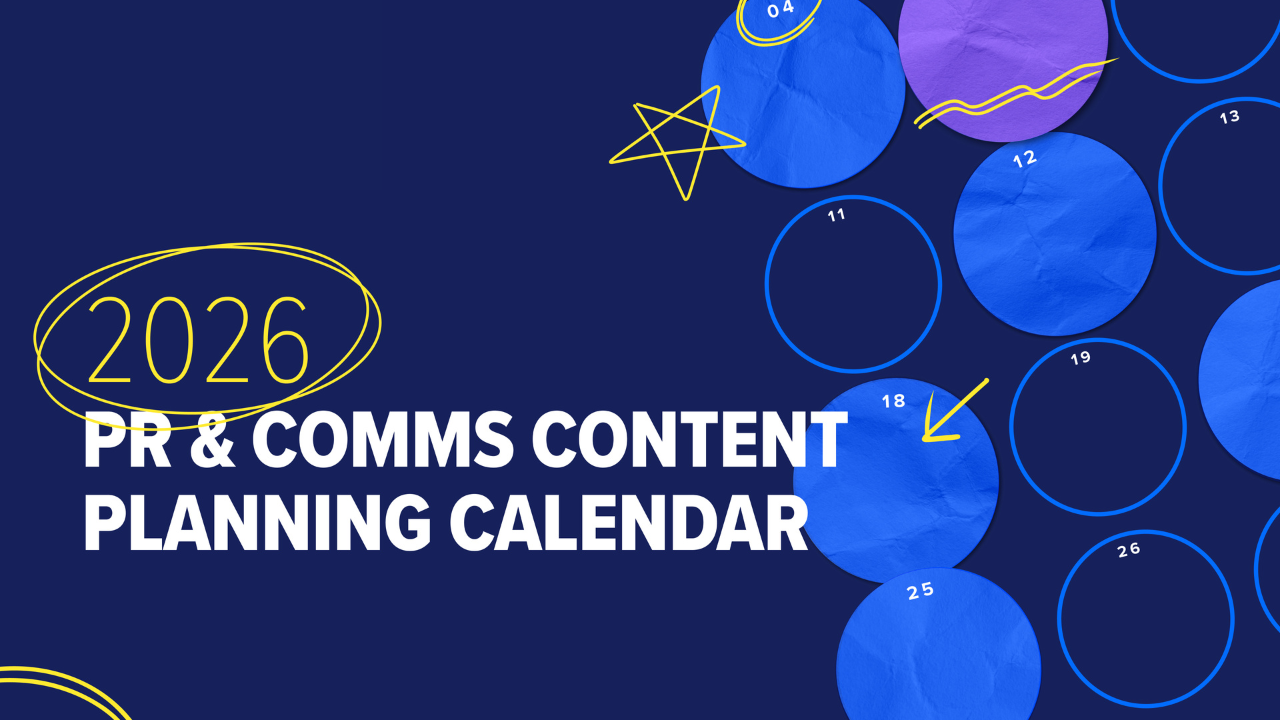Traditional media has long been key for success in PR and marketing. Getting your brand mentioned in newspaper articles and television pieces is essential in terms of brand awareness and attracting new customers.
The landscape has changed in the past two decades, however. Not only is there online news to contend with; social media, from Twitter and Facebook to Instagram and beyond, has become the first port of call for most people.
The two domains do share certain commonalities, but they differ vastly in many aspects. While good old-fashioned networking and relationship building never really lose their touch, it has become significantly easier for PR professionals to reach out to their target influencers at the click of a button. Ultimately, it’s vital for businesses to leverage both channels to optimise their communication strategies. However, coming up with a PR strategy that exploits both to the fullest remains a challenge for most companies.
Why is it important for brands to recognise the potential of both channels?
Defenders of traditional media would argue that there is no better way to get your message across, create brand awareness and make a lasting impact. This, to a great extent, holds true even in the digital age, where real-time updates are the order of the day. Moreover, audiences are less likely to doubt the veracity of information disseminated by traditional media. According to a 2021 survey by YouGov, traditional media remains the most trusted place to advertise, with TV and print in the top spots (46%) and radio coming in a close second (45%). Thus, its impact in today’s day and age remains to be seen.
On the other hand, social media is integral to creating some much-needed buzz about brands and lending them a unique personality. From finding journalists and influencers to crucial media opportunities, its importance cannot be underestimated. Furthermore, social media channels are vital insofar as connecting with younger audiences is concerned. According to research carried out by Twitter, nearly three-quarters of those surveyed say having an active Twitter presence makes a brand feel both more human and more trustworthy.
Therefore, it’s important not only to know when to go for traditional media and when to opt for a social approach, but also to customise the messaging for each channel accordingly.
Does a unified strategy always work?
One of the key factors of having a unified strategy is ensuring that there is an aligned approach between the social, marketing and communications teams. While individual tactics may vary from one platform to another, it is imperative that there be consistency in the messages that are being conveyed. This will then drive communications results, in turn leading to better results for the business as a whole.
Being too strict with these rules, however, can mean that certain ideas can be missed, leading to lost opportunities for communication.
Looking across the major platforms, it’s clear that there is no one-size-fits-all approach. According to the Reuters Institute Digital News Report 2021, while Facebook skews slightly older and Twitter skews younger, Instagram is used mostly by the under-45s, Snapchat by the under-30s and TikTok the under-25s. This means that the same means cannot be used to convey the same message across all five. Keeping in mind the audience’s needs, preferences and demographics would also be vital to formulating a strategy that seamlessly unites both.
Trying something different
Brands that fail to take control of the digital space can lag behind their competitors. New challengers and disruptors can enter the market and overtake legacy names just by trying something different.
Take the example of NatWest. This bank has a long history and a solid reputation, going back to the middle of the 20th Century. New challengers such as Revolut, Monzo and Metro Bank have entered the market in recent years, offering hassle-free ways to pay as well as perks such as cashback and discounts with various brands.
The success of NatWest is very different in each space. In traditional media, the bank vastly outperforms its disruptor bank competitors, with a large share of voice and unified messaging.
Some 72% of coverage with message tracking support for students included a mention of NatWest, with Housemate, its bill-splitting app, proving popular with students and young people.
On social media, things are different. With just a 12% share of voice, NatWest is drowned out by its competitors. At present NatWest has the highest share of negative discussion on social media, with consumers using various platforms to express their frustration when things aren’t going as planned.
Owning the conversation
Monzo has proven itself to be a comfortable player in the digital landscape, leading the way with message delivery and owned conversation. This challenger bank is also proactive when it comes to customer interaction, particularly in responding to queries and feedback.
All that said, no one bank owns this space, and so NatWest could easily step in and chart their own course, taking control of their own narrative and being proactive in helping customers with direct responses to queries and broader information about known issues.
Who owns the digital discussion when it comes to online banking? At this juncture, the answer appears to be no one. Now is the time to take the step to bring your brand to the forefront.
Showing off your range
NatWest can learn from competitors like Revolut, who drive their message forward showing the full range of capabilities within its online platform. What can NatWest offer? It needs to demonstrate that it delivers innovation, supports students, provides digital banking solutions and offers convenient banking.
The Cision Insights team also recommends that NatWest undergo a full competitor analysis – asking questions like what tactics are the challenger banks employing? What spokespeople are they using? What messages are they featuring in their content to resonate with the target audience? Is it getting through?
Beyond that, the brand could target social media outlets or influencers in order to boost exposure and engagement with the younger audience.
Challenge the challengers
Furthermore, it is key to devise a strategy to speak to the specific business need, that is developing a voice to reach this particular market and take their attention away from challengers. This should be combined with targeted research, using the power of consumer intelligence to measure how the perception of Natwest is changing as the approach is implemented. Then combine that with outcome data - has there been an uplift in younger customers and how does this correspond to media coverage?
Answering these questions can show where the differences lie between traditional and social media and how to cross the gap between the two.
All this goes to show that there is no one course of action that can work across different platforms. Cision’s Insights team can help you find the right voice for the right space, allowing you to get the tone right wherever you are.
Learn how Cision Global Insights can benefit your business. Request a consultation.
Most Recent Posts
Cision Resources
-
E-books and Guides
Comprehensive how-to guides on strategy and tactics
-
Case Studies
What are other brands doing – and how can we learn from them?
Learn More. Do More. demo new
PR Tips, Case Studies, and Product Updates

[On-Demand Webinar] The Next Generation of Media Intelligence: From Gorkana to CisionOne
Explore CisionOne, a revolutionary media intelligence platform, and the evolution of Gorkana. Learn key features and strategies from Luke Williams, CisionOne Product Marketing Manager. Elevate your media outreach to new heights!

